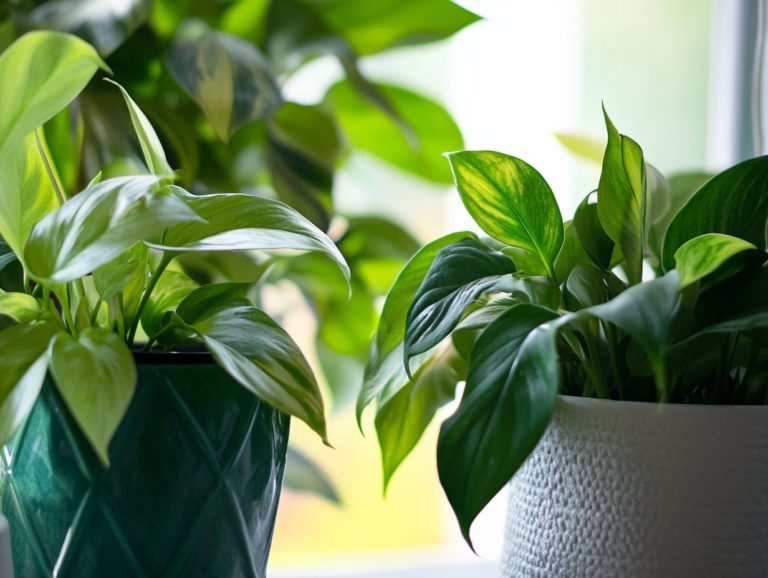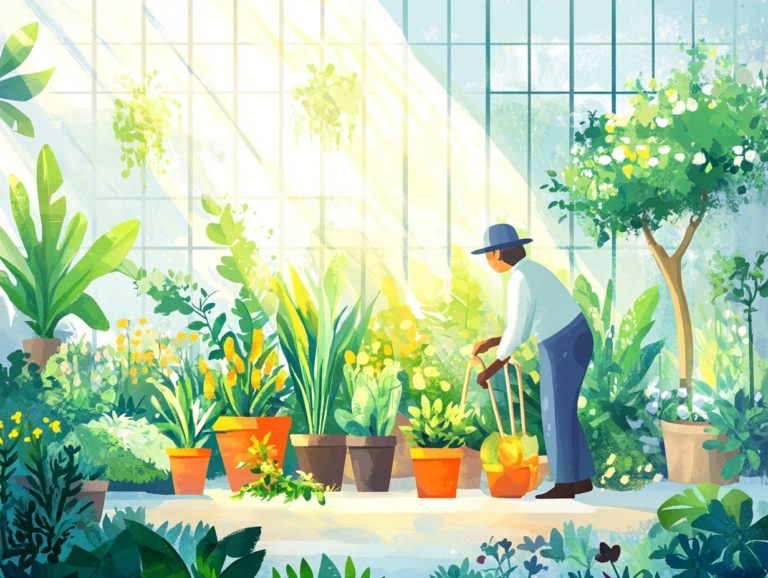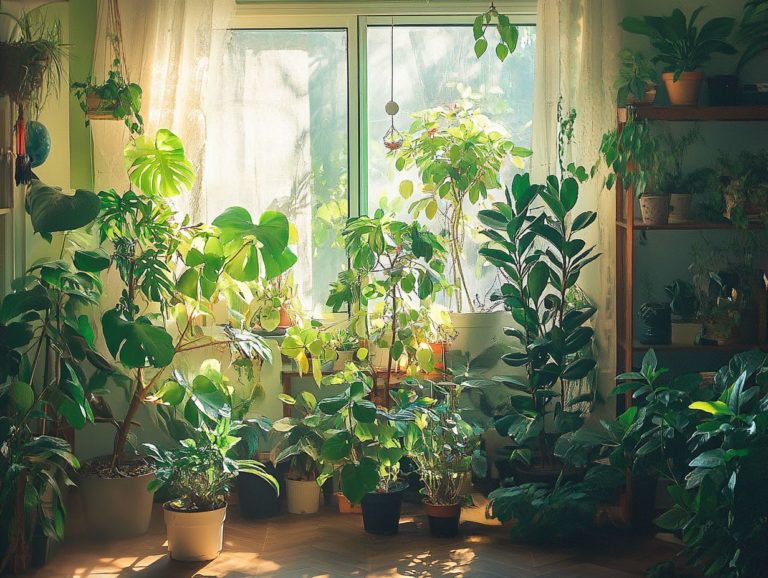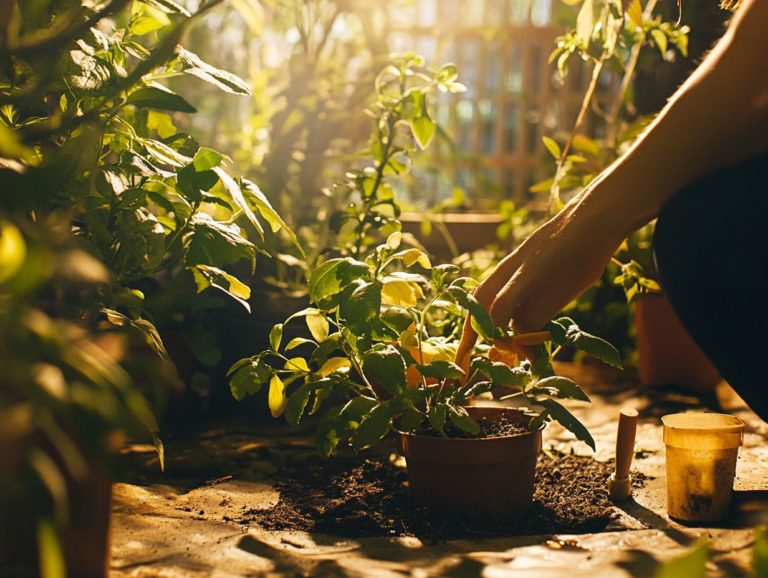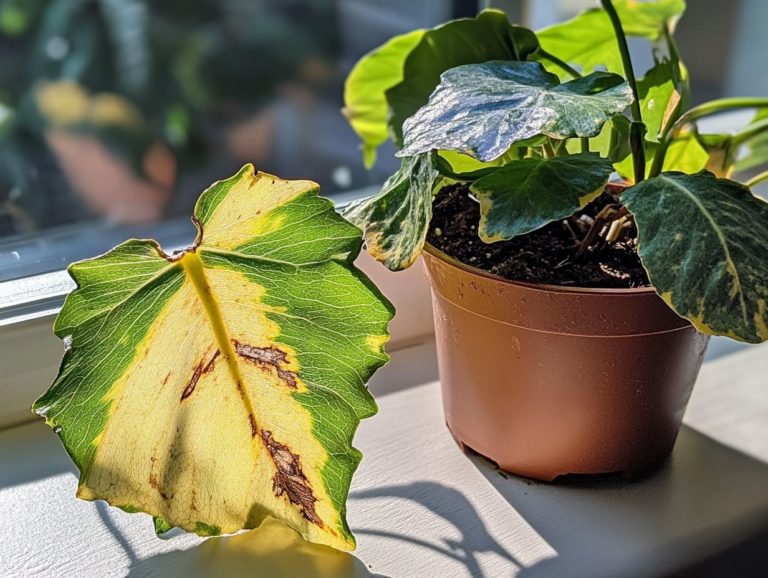Signs of Overwatering in Houseplants
Overwatering is often the most common pitfall for plant enthusiasts, and it can cause substantial harm to your beloved houseplants.
In this exploration, you ll discover what overwatering truly means and how to spot its telltale signs, from visual indicators to shifts in your plant s behavior.
If you ve observed your greenery facing struggles, rest assured we ll provide you with effective strategies to revive those overwatered plants and invaluable tips to prevent this issue from arising in the future.
Your plants health is merely a read away!
Contents
- Key Takeaways:
- Understanding Overwatering in Houseplants
- Signs of Overwatering
- How to Fix Overwatered Plants
- Preventing Overwatering
- Frequently Asked Questions
- What are the signs of overwatering in houseplants?
- Why do houseplants suffer from overwatering?
- How can I tell if my houseplant needs water or if it is being overwatered?
- What should I do if I suspect my houseplant is being overwatered?
- Can overwatering cause permanent damage to my houseplants?
- How can I prevent overwatering in my houseplants?
Key Takeaways:
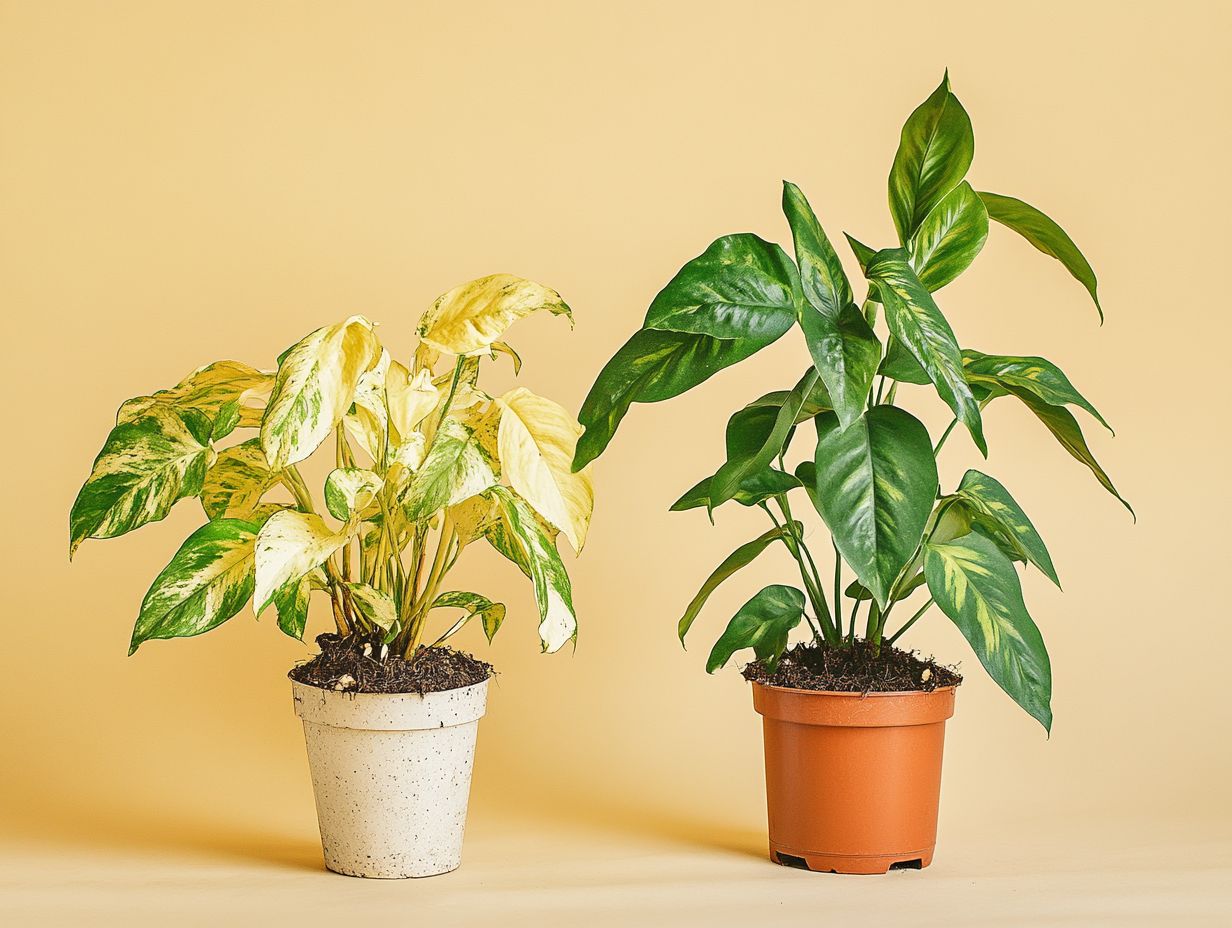
- Watch for yellowing leaves and mold.
- Notice how your plant behaves drooping can indicate trouble.
- Fix overwatering by adjusting your watering schedule and improving drainage.
Understanding Overwatering in Houseplants
Overwatering is a common challenge for plant enthusiasts, often leading to serious consequences like root rot and other health complications for your beloved potted plants.
To navigate this issue effectively, you need to be aware of the signs of overwatering, such as wilting and yellowing leaves, as well as that all-too-familiar waterlogged soil. For more details on this topic, check out the effects of overwatering houseplants.
Establishing a good watering schedule is key to keeping your plants happy and healthy! Successful plant care demands an understanding of the specific needs of your indoor plants, including the crucial role of a well-balanced soil mix and adequate drainage holes to foster healthy growth.
What is Overwatering?
Overwatering occurs when you give your plants too much water, resulting in waterlogged soil and root rot conditions that can severely impact the health and vitality of your plants.
This issue often arises from a combination of factors, including poor watering habits, environmental conditions, and inadequate drainage systems. If your pots lack proper drainage holes, excess moisture can become trapped, creating a breeding ground for harmful fungi and bacteria that thrive in soggy conditions.
Too much moisture in the soil deprives the roots of essential oxygen, leading to decay and, ultimately, jeopardizing your plant’s survival.
To keep your plants thriving, it’s essential to regularly check soil moisture levels. By ensuring you provide just the right amount of water, you can support their optimal growth and development.
Signs of Overwatering
Recognizing the signs of overwatering is essential for you as a dedicated plant parent striving to care for your indoor plants effectively. These symptoms can present themselves in various ways, such as wilting leaves, yellowing foliage, and waterlogged soil that feels more like a sponge than healthy earth.
Overwatered plants can attract pests like fungus gnats, further signaling distress in your plants health. By understanding these common indicators, you can take prompt and effective measures to restore your plants to their vibrant selves.
Visual Indicators
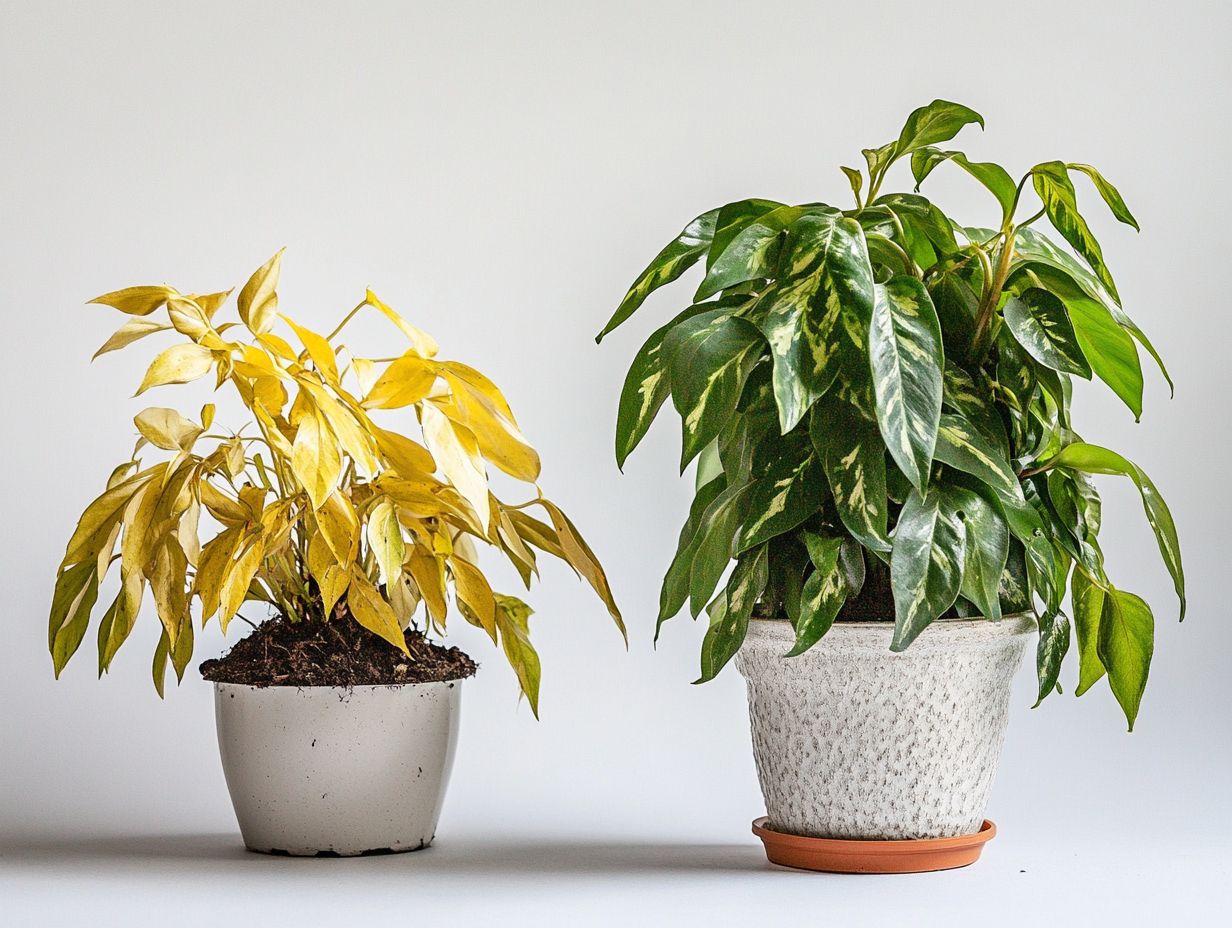
Recognizing the visual indicators of overwatering in your plants is essential. Symptoms like wilting and yellowing leaves are clear signs that your plant is struggling with too much moisture in its environment.
You might also notice other visual cues, such as signs of root rot in indoor plants or mold growing on the soil surface, which highlight the harmful effects of excessive watering. For example, an overwatered pothos could develop brown, mushy roots, indicating nutrient uptake issues and stunted growth.
Similarly, peace lilies may display drooping leaves, which can be a bit tricky since they also wilt when they re thirsty. It s crucial for you as a caretaker to connect these symptoms with the soil’s moisture levels, ensuring you strike the right balance for your plant’s health.
Keep a close eye on your plants; they’re counting on you!
Behavioral Changes in Plants
Behavioral changes in your plants, such as slowed growth and root rot, are key signs of overwatering. Immediate action is essential for you as a plant parent.
When roots stay too wet, they can rot. This leads to poor nutrient absorption and declining plant health.
You might see stunted growth, yellowing leaves, or wilting, even if the soil feels damp. Stagnant water can also attract pests like fungus gnats, whose larvae thrive in wet conditions.
To interpret these signs, check the area around the roots and assess moisture before watering again.
Establishing a proper watering schedule is vital for keeping your plants healthy and preventing these issues.
How to Fix Overwatered Plants
Reviving overwatered plants requires your quick attention. Start by checking the soil condition; if it’s too wet, think about repotting the plant.
This improves drainage and creates essential air pockets in the soil, giving your plant a fresh start.
Steps to Revive Overwatered Plants
To revive overwatered plants, begin by repotting them in fresh soil with good drainage. This helps air pockets form and fights root rot.
Choose a well-draining potting mix, ideally with ingredients like perlite or orchid bark to improve aeration.
After repotting, examine the roots for rot, identified by a mushy texture and dark color. Trim away any rot to help save your plant.
Allow the soil to dry out thoroughly before watering again. This key step helps your plant avoid further issues. Regular monitoring can significantly aid recovery and health.
Preventing Overwatering
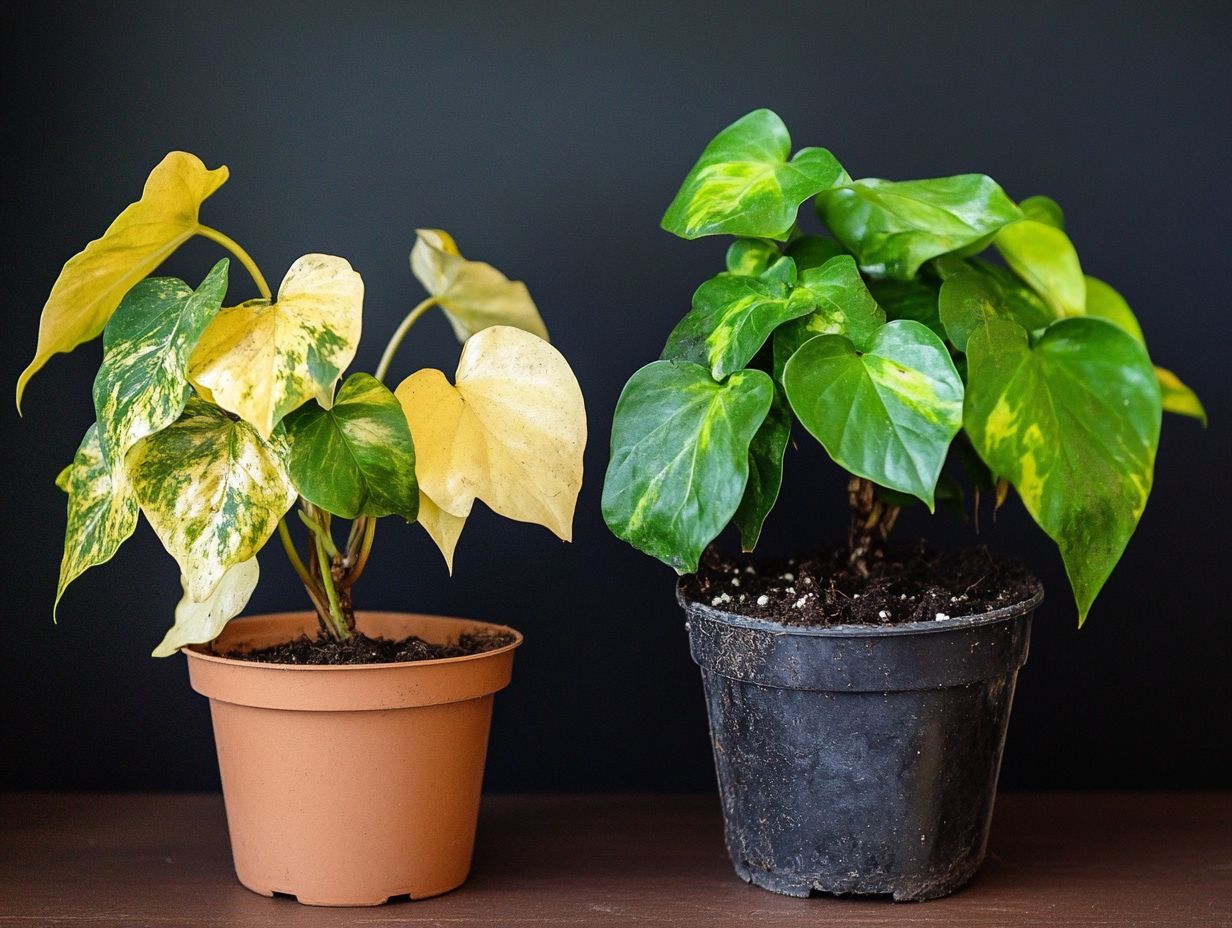
Preventing overwatering starts with mastering proper watering techniques and establishing a consistent schedule for your indoor plants. This ensures they thrive without excess moisture.
Tips for Proper Watering Techniques
Proper watering techniques are essential for your plants health. A moisture meter can be a great tool.
By regularly checking soil moisture, you’ll know exactly when to water, making it easier to stick to a schedule. Remember, different plants have unique hydration needs. For example, succulents prefer drier soil, while peace lilies thrive in moist soil.
Consider factors like humidity, temperature, and plant size to determine watering frequency. This thoughtful approach will promote robust growth and vitality in your greenery.
Choosing the Right Soil and Pot for Your Plants
Selecting the right soil mixture and pot with drainage holes is essential for you as a plant parent to prevent overwatering issues. This ensures that your potted plants receive optimal moisture levels without risking root damage.
Understand the specific needs of the plant varieties you re nurturing. For example, succulents and cacti thrive in well-draining soil made from a mix of potting soil, sand, and perlite, which allows excess water to escape quickly. Conversely, tropical plants prefer a moisture-retentive mixture including natural materials that help retain moisture such as peat moss, vermiculite, or coco coir.
Choosing pots with drainage holes is non-negotiable; it prevents water from stagnating at the bottom a leading cause of root rot. Embrace these tips to boost your plant’s health and enjoy a vibrant indoor garden!
Frequently Asked Questions
What are the signs of overwatering in houseplants?
- Yellowing or wilting leaves
- Mold or fungus growth
- A musty odor
The signs of overwatering in houseplants include the symptoms listed above.
Why do houseplants suffer from overwatering?
Houseplants can suffer from overwatering due to excessive watering, poor drainage, or inadequate air circulation in the soil.
How can I tell if my houseplant needs water or if it is being overwatered?
Check the soil moisture level with your finger. If the soil is still moist, it may be suffering from overwatering.
What should I do if I suspect my houseplant is being overwatered?
If you suspect your houseplant is being overwatered, stop watering it immediately and allow the soil to dry out. You may also need to repot the plant with fresh, well-draining soil.
Can overwatering cause permanent damage to my houseplants?
Yes, overwatering can cause permanent damage by suffocating the roots and leading to root rot. This can eventually kill the plant if not addressed in time. Look out for yellowing or wilting leaves, as these are signs of overwatering that should not be ignored. Additionally, waterlogged soil can create air pockets that are detrimental to root health.
How can I prevent overwatering in my houseplants?
To prevent overwatering, ensure you water only when the soil is dry, use a well-draining potting mix, and provide adequate drainage holes for the plant. Pay attention to the plant’s specific watering needs and adjust accordingly. Using a moisture meter can help you find the right watering schedule. Indoor plants like Snake plant, Calathea, Anthuriums, Syngonium, and Monsteras are particularly sensitive to excess water. Keep in mind that fungus gnats can thrive in moist soil, so monitor soil moisture levels closely.
Start caring for your plants today and watch them flourish!


